Formosa: the Dutch history of the Asian tiger
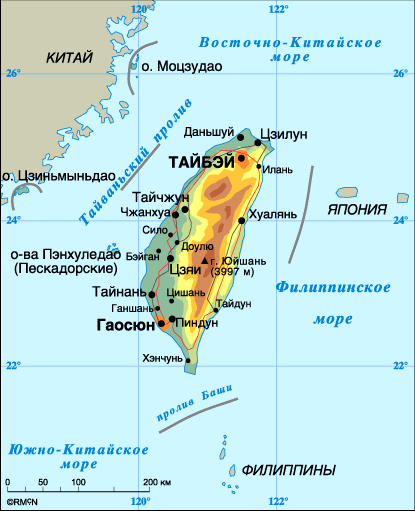 Officially, Taiwan is called the Republic of China, since Taiwanese statehood originated in the Xinhai Revolution 1911. Before 1971, it was the representative of the Republic of China - Taiwan held a seat in the United Nations, that is, Taiwan was considered a more legitimate state than the People’s Republic of China (PRC). Today Taiwan (Republic of China) is a partially recognized state. Having a lot of unresolved disputes and contradictions with Beijing. Meanwhile, support from the United States and its allies in East and Southeast Asia helped the island become a subject of regional and even world politics.
Officially, Taiwan is called the Republic of China, since Taiwanese statehood originated in the Xinhai Revolution 1911. Before 1971, it was the representative of the Republic of China - Taiwan held a seat in the United Nations, that is, Taiwan was considered a more legitimate state than the People’s Republic of China (PRC). Today Taiwan (Republic of China) is a partially recognized state. Having a lot of unresolved disputes and contradictions with Beijing. Meanwhile, support from the United States and its allies in East and Southeast Asia helped the island become a subject of regional and even world politics. Han and Gaoshan
Currently, the overwhelming majority of people in Taiwan are ethnic Chinese. They are mainly representatives of the South Chinese Hakka subethnos, speaking the same dialect, akin to the dialect of Chinese residents of Guangdong, and representatives of the subethnos Ming, who speak the Min dialects of Chinese and related to the population of Fujian (Ming is the old name of this province). Thus, the population of Taiwan, although it is Chinese, but has its own specifics - this is "southern Chinese." However, the Chinese are the non-indigenous population of the island, although they have been living on it for a very long time. Even in the XII century, Taiwan was annexed to China, and from the XIV century. began its systematic settlement of immigrants from the territory of the modern provinces of Fujian and Guangdong.
Prior to the Chinese, representatives of several tribes lived in Taiwan who spoke Austronesian languages and were related to the population of the Philippine Islands and the Malay Archipelago. The descendants of the aboriginal islands remained in modern Taiwan, but they make up no more than 2-3% of the population. The Chinese call them “Gaoshan”, uniting under this name flat (in the north and west) and mountain (in the south, east and in the center of the island) ethnic groups. The inhabitants of the plains are mostly sinified and at the present time have practically dissolved in the surrounding multimillion mass of the Chinese population. The largest plain ethnic group is siraya. By the way, it is the name of the island of Taiwan that is associated with Siraya, since “Taiwoan” is one of the subgroups of the ethnic group Siraya. The mountainous population of Taiwan has largely retained its languages and culture. The largest mountain ethnic groups inhabiting the southern, eastern and central regions of the island - am, Atayal, Payvan, Truku (Sedok), Bunun.
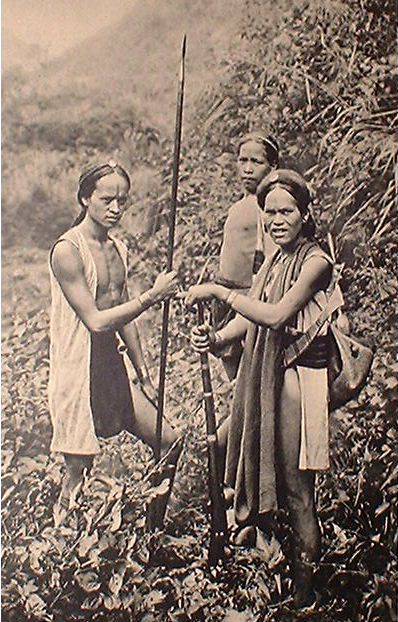
The culture of the Taiwanese aborigines is close to the culture of the Filipino peoples before the Spanish conquest. Of course, in recent centuries, the island’s indigenous population has largely been assimilated by the Chinese, but the mountain people of Taiwan still retain their ethnic and cultural identity and identity, which is currently one of the important tools for attracting foreign tourists to the island. Until recent years, the Kuomintang government of Taiwan was striving to finally assimilate the aboriginal population, for which certain efforts were made both in school education and in the sphere of mass communications. However, the growing national movement of the indigenous people of Taiwan, on the one hand, and, to a greater extent, commercial considerations (since tribes are the subject of ethnographic interest of foreign tourists), on the other hand, contributed to a gradual change in the national policy of the Taiwanese government in the late 1990 - early 2000 yo It was only in 2009 that the existence of 14 tribes was officially recognized: Amia, Atayal, Bunun, Cavalan, Payvan, Puyuma, Ruqai, Saysiyat, Sakizaya, Sediktruku, Thao, Zou, Yami.
The island of Taiwan became the object of interest of mainland China at the beginning of our era, and in 610 AD. a Chinese army of about 10 thousand people marched on Taiwan. Naturally, the indigenous population of the island, which was at a much lower stage of development than the Chinese, could not defend its independence and was forced to accept Taiwan’s submission to China, and then the settlement of the island by Chinese colonists. The Chinese brought to the island more developed agriculture, handicrafts, and aboriginal tribes were pushed into the mountains. Despite the fact that the island was officially incorporated into China in the 12th century, and in 1360, an oversight office was created that took over administrative functions, the power of the Chinese government in Taiwan was weak. Foreign colonialists took advantage of this — first Japanese pirates who tried to gain a foothold on the coast of Taiwan by creating their bases here and then by Europeans.
In 1590, the island of Taiwan was discovered by Portuguese travelers, who called him Formosa, that is, “Beautiful.” However, since at that time Portugal was in union with Spain (the so-called “Iberian Union”), the discovery by the Portuguese sailors of Taiwan automatically meant that the latter fell into the sphere of geopolitical interests of the Spanish crown. However, at first, the Spaniards were indifferent to the open island - they did not build forts and trade settlements here, since they were more puzzled by questions of further establishing control over the Philippine islands.
Dutch-Chinese war and the colonization of Formosa
Meanwhile, the Spaniards and the Portuguese in the southern seas have a new active and dangerous rival. The young state of the Netherlands pursued, as one of its main goals, gaining control over the transportation of spices from Southeast Asia to Europe. Initially, the Dutch tried to start trade in China, but the Chinese authorities refused to cooperate with them, since since 1535 they had trade relations with Portugal. In 1604, the Dutch expedition left the port of Batavia (Jakarta) in Macau, intending to force the Chinese to trade, but the Dutch were surrounded by superior Chinese fleet and forced to retreat.
In 1622, the Dutch made another attempt to master the port of Macau, but it also failed. Desperate to establish a base in Macau, the Dutch retreated to the Pescadores islands (Penghu). At Penghu, the Dutch laid the fort using the labor of enslaved local Chinese. However, the cruelty of the Dutch colonialists was such that soon 1300 from 1500 captured Chinese died from starvation and starvation. The Dutch ship "golden lion", en route to Pescadores, was shipwrecked on Lamay Island, off the southwest coast of Taiwan. The surviving Dutch were killed by local residents. In 1623, Dutch traders first landed on the island of Taiwan, which attracted their attention as a suitable place to create a transshipment point for sea trade with China and Japan.
Meanwhile, Min’s empire warned the Dutch colonialists that Pescadores Islands was a Chinese territory and demanded their immediate release. The new governor of the province of Fujian, Nan Ju, and began preparations for the attack on the Dutch base on the island of Penghu. 30 July 1624, Chinese troops, totaling 5000 military personnel and 40-50 warships, led by General Van Meng Hong, surrounded the Dutch fort. 3 August the Dutch requested a truce and folded weapon. Ming Empire magnificently celebrated the victory over the Dutch, who in Chinese sources were called "barbarians with red hair." The twelve prisoners of the Dutch even held a parade in front of the emperor in Beijing.
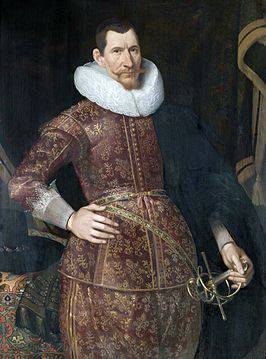 After the victory of the empire, the Dutch left the Pescadore Islands and decided to relocate to Formosa. The Dutch colonialists quickly realized that, unlike the Indonesian and Malay principalities, the Chinese empire is a serious force and, despite the military-technical lag, is not going to make concessions to the Netherlands. Yang Pietersoon Kuhn (1587-1629), who served as governor-general of the Dutch East Indies at that time, realized that the large number of Chinese and the development of state administration in mainland China would not allow the Dutch to create a full-fledged trading trading station and military fort on the South China coast. By the way, it was Jan Pietersoon Kuhn who stood at the origins of the Dutch conquest of Indonesia - under his leadership the Dutch troops burned Jayakarta and laid in its place Batavia, which became the capital of the Dutch East Indies for many years, and then Indonesia under the name Jakarta. In 1621, the troops of Kuhn were brutally massacred the population of Banda Island in Indonesia. There is no doubt that this person would not stand on ceremony with Macao, but he had a sober practical mind and perfectly understood that it was better to turn his attention to "no man’s land."
After the victory of the empire, the Dutch left the Pescadore Islands and decided to relocate to Formosa. The Dutch colonialists quickly realized that, unlike the Indonesian and Malay principalities, the Chinese empire is a serious force and, despite the military-technical lag, is not going to make concessions to the Netherlands. Yang Pietersoon Kuhn (1587-1629), who served as governor-general of the Dutch East Indies at that time, realized that the large number of Chinese and the development of state administration in mainland China would not allow the Dutch to create a full-fledged trading trading station and military fort on the South China coast. By the way, it was Jan Pietersoon Kuhn who stood at the origins of the Dutch conquest of Indonesia - under his leadership the Dutch troops burned Jayakarta and laid in its place Batavia, which became the capital of the Dutch East Indies for many years, and then Indonesia under the name Jakarta. In 1621, the troops of Kuhn were brutally massacred the population of Banda Island in Indonesia. There is no doubt that this person would not stand on ceremony with Macao, but he had a sober practical mind and perfectly understood that it was better to turn his attention to "no man’s land." Initially, a temporary fort was built on the sandy Taiovan peninsula, which four years later was replaced by a more capital fortress - Fort Zealand. One of the first actions of the Dutch on the island of Taiwan was a punitive operation against the natives, who fiercely resisted the colonization of the island. The first expedition was undertaken against the villages of Bakloan and Mattau. The village of Mattau was wiped off the face of the earth, after which the surviving representatives of the tribe living there were forced to cease resistance. Seeing a threatening example of the massacre of the village of Mattau, the other native tribes did not dare to continue further anti-Dutch resistance. At the same time, the “cold war” of the Dutch East India Company with China continued, which escalated into armed clashes between the Dutch and Chinese ships in the Taiwan Strait.
"Dutch World"
The Dutch took upon themselves the mission of Christianizing the Taiwanese aborigines, the “Gaoshan,” covering their authentic plans for using the island as a military and trade base with civilizing tasks. Missionaries were sent to the villages of the natives, who were to teach Taiwanese people to wear clothes and gradually incline them to accept Christianity. However, the natives met the missionaries with hostility, some of them were killed. In 1635-1636 a large campaign was held to "appease" the Taiwanese natives. After the deaths of hundreds of fellow tribesmen, the Taiwanese were forced to en masse to swear allegiance to the Dutch colonizer, in order to save their own lives. Thus, the Dutch established their authority on a large part of the island. The period after “appeasement” of Taiwan was called the “Dutch World”. However, the military-political situation on the island remained difficult. If the Dutch could cope with the natives without problems, then the Spaniards brought much more trouble.
In 1626, Spain established dominance over part of Taiwan. This decision was preceded by fears of the Spanish leadership, who saw in the Dutch expansion on the island a threat to the established order in the southern seas, including the Spanish authorities in the Philippines. In 1626, a Spanish expedition landed at Jilong Bay, where the settlement of Santissima-Trinidad was founded. The Spanish colonialists built two forts on the island and on the shore of the bay. In 1629, another Spanish fortification was founded - Fort Santo Domingo. Spanish missionaries began spreading Catholicism among the local aboriginal population.
Thus, the Spaniards showed the Dutch that they also view Taiwan as a colonial expansion object of interest. The Dutch, in turn, were very unhappy with the Spanish presence on the island. However, since Spain did not have enough forces for a full-fledged presence on the island, the Dutch decided to dislodge the Spanish contingent from the territory of Taiwan. In 1641, the first attack on the Spanish forts was undertaken, but the Spaniards managed to repel the Dutch attack. In August, 1642 was a detachment of Dutch soldiers, supported by local soldiers recruited from the natives, was re-deployed on ships to Fort Santo Domingo. The Dutch managed to dislodge a small Spanish contingent from the island’s territory, after which the Dutch began to conquer northern Taiwan.
Partly it was the Dutch who initiated the settlement of Taiwan by the Chinese. The fact is that in addition to trade, the Dutch authorities have begun to develop agriculture in Taiwan. To work on the plantations, the Dutch authorities of the island began to recruit young unmarried Chinese in the South Chinese province of Fujian, separated by a strait from Taiwan. So began to grow rapidly the Chinese population on the island. However, the cruelty of the Dutch planters, which contributed to the acquisition by the Dutch Taiwan of the name "Gates of Hell" in Chinese sources, led to uprisings of plantation workers. The Dutch suppressed the uprising with incredible cruelty. In 1652, as a result of the suppression of the uprising, up to 25% of workers who participated in the uprising were killed. Simultaneously with the suppression of the Chinese uprisings, the Dutch were drowned in blood and speeches of the indigenous settlement. So, at the beginning of 1650's. there were several uprisings in the indigenous villages. The Taiwanese population was dissatisfied with the openly criminal actions of the Dutch colonialists - the aliens seized women in local villages, took rice and deer skins from the natives. In December, 1652 broke out a rebellion in the village of Wu-lao-Van. After the natives killed two Dutch translators, Dutch troops attacked the village, killing thirty local residents. In February, 1653, after the Dutch blockade, the natives were forced to ask for peace.
The "pacified" villages of the Taiwanese aborigines continued to be ruled by their leaders. Administratively, they submitted to the governor of Formosa. The Governor was appointed by the Governor-General of the Dutch East Indies, whose headquarters was in Batavia. Governor Formosa was authorized to make laws, collect taxes, wage war, and make peace on behalf of the Dutch East India Company. The second person after the governor was the president of the Council of Taiovana, who, in the event of death or loss of capacity of the governor, assumed his official duties. The residence of the governor was in Fort Zealand.
Economy and politics of the Dutch Formosa
Dutch Formosa was the second most important possession of the Netherlands in the East Indies after Dejima Port. The Dutch colonialists sought to turn a low-lived island into a region with a thriving economy, for which they developed not only transit trade with China and Japan, but also agriculture. Chinese silk, Japanese silver, and Taiwanese sika deer skins were exported through Taiwan. Deer skins are highly valued by Japanese samurai, who used them as a component of armor. As for deer meat and entrails, they were exported to mainland China, where they also found numerous buyers. Dutch plantations on the island cultivated rice and sugar, which was also exported.
During the Dutch administration of Formosa, the population of the island as a whole consisted of three groups that had significant differences between them. The first group consisted of the natives of Taiwan, who led a traditional way of life and engaged in slash-and-burn farming, hunting and gathering. They inhabited the entire territory of the island, living in villages with a population of several hundred to several thousand inhabitants. The second group consisted of the Dutch - the smallest category of inhabitants of the island. The Dutch served in the garrison units, occupied administrative positions, were engaged in plantation economy and missionary activity, trade. The number of Dutch troops on the island varied from 180 soldiers and officers at the beginning of the administration of Formosa to 1800 troops at the time of the departure of the Dutch from the island.
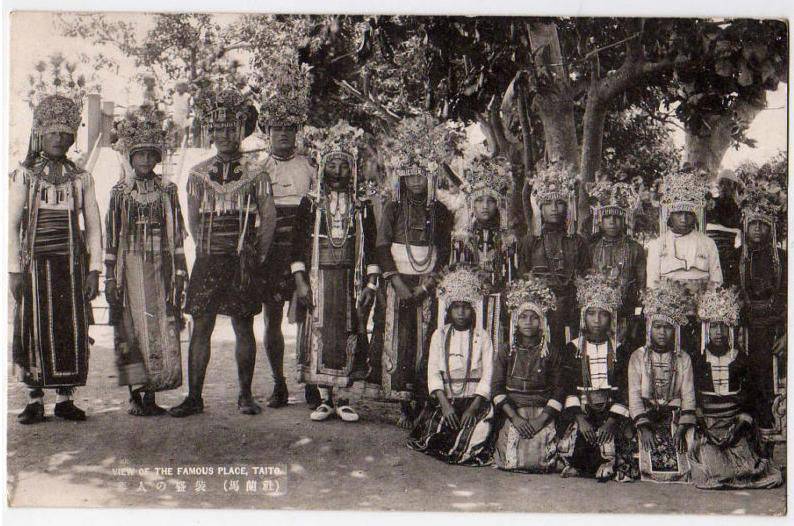
The third group of the island’s population was Chinese. By the time of the beginning of the colonization of Taiwan, a number of Chinese had already lived on the island, according to contemporaries - about 1-1,5 thousands of people. Mostly they were people from Fujian province - seasonal traders, almost all of them were male, who returned to the motherland through the strait in the offseason. Since 1640's The Chinese population of the island began to grow rapidly, helped by the importation of workers for Dutch plantations, which were used practically as slaves. By the end of 1650's. The number of Chinese population on the island reached, according to various estimates, from 10-15 thousand to 50 thousand people.
In addition to the natives, the Dutch and the Chinese, a small number of Japanese and Spaniards lived on the island, as well as Indonesians - slaves brought by the Dutch from Batavia. The Javanese took part in the punitive operations of the Dutch troops against the native villages. After appeasing the Aborigines, the indigenous people of Taiwan began to be used to strengthen the Dutch system of maintaining order in the island. To reinforce the Dutch military contingent stationed on the island, the command of Fort Zealand created a militia from among the recruited members of the native population. The men of the indigenous tribes were hired to suppress the uprisings of their fellow tribesmen and Chinese workers on Dutch plantations. In turn, the Dutch provided some assistance to the natives in organizing agriculture, because they hoped with their help to improve the economic status of the colony. The Dutch authorities in 1650 carried out a census of the native population, according to which the number of natives in the territory under control was estimated at 68 600 people living in 315 tribal villages.
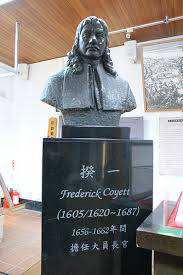 - the last governor of the Dutch Formosa Frederick Coyet
- the last governor of the Dutch Formosa Frederick CoyetHowever, in general, the relationship between the Dutch and the native population was rather tense. This was facilitated by the violent Christianization and the struggle of the Dutch against the traditional customs and habitual way of life of the natives. The Dutch forbade hunting for heads, walking in the nude, marital infidelity, considering all these customs as manifestations of the savagery of the local Aborigines. It should be noted that in the struggle with the traditional way of life of the natives, the Dutch used the tried and true combination of “carrot and stick”. In the native villages, Dutch schools were created under the guidance of Christian missionaries, in which they studied not only Christian dogma, but also Dutch language and writing. Literacy training began with children, but then they began to eliminate adult illiteracy. Moreover, the missionaries used both the Dutch language and the Latin script for one of the local languages - Siraya, which was spoken by the inhabitants of the lowland part of Southern Taiwan. The Gospel of Matthew and John, the Catechism, the Ten Commandments, the most important prayers were translated into Syrah. In the districts of Tainan, Xingang, Xiaolong, Mattau, Dajechzhen, Danshui and Taoyuan, the most active attempts of the Dutch to Christianize the local population were observed. In some villages, it was possible to instill in the local population a specific fashion on Sundays in the Dutch language.
It should be noted that prior to colonization, the local population had no written language and only the appearance of missionaries led to the start of development of writing for local languages based on the Latin alphabet. There are examples of training local youths at a higher level, in particular, one native of Formosa even emigrated to the Netherlands. However, in the bulk of the aborigines opposed the Dutch religious and educational policies. This was clearly demonstrated by the events that unfolded at the beginning of the 1660s. - the invasion of the island of Chinese troops led by Coxings and the transition of a large part of the natives to the side of the Chinese. Yesterday’s graduates of mission schools successfully dealt with the Dutch colonialists, destroying both the school buildings and the Christian books and textbooks themselves.
Coxing. The expulsion of the Dutch and "Peace in the East"
In the middle of the 17th century, the power of the Chinese Ming dynasty was greatly shaken due to the Manchu expansion. In the north of China, the Qing Empire was created with the Manchu dynasty at its head. Nevertheless, loyal Minsk dynasty commanders acted in the south. One of them was Zheng Chenggun (1624-1662), better known by the Europeanized Coxing name. He came from a mixed Chinese-Japanese family and was born in Japan, where his father settled - a Chinese pirate who married a Japanese woman. When Coxing was seven years old, he and his mother moved to Fujian Province, where his father - a former pirate - was promoted to the ministry of the Ming Empire. The former pirate quickly transformed into an official and chose to give his son an education in the traditional Confucian spirit, so that he could make a full-fledged career at the imperial court.
Koksing studied at the Nanking Academy, but after Manchurian troops took over Nanjing in 1645, Coxing and his father retreated to Fujian, where they continued to resist the Manchus for some time at the head of the pirate troops. Then Father Coxing went to conclude peace with the Manchus and gave them the heir of the Ming dynasty. However, Coxing was more loyal to the oath of this Ming dynasty, and continued to resist. He managed to build a 100-thousand army and seize control of much of Fujian province. In 1659, the city of Coxing swam to Nanking itself. However, he did not have the strength to directly confront the Manchus, although Coxing and his pirates retained an advantage on the water. Realizing that for the successful continuation of the struggle, and even a banal survival, his forces need a base that is difficult for the Manchu armies, Coxing turned his gaze to Formosa.
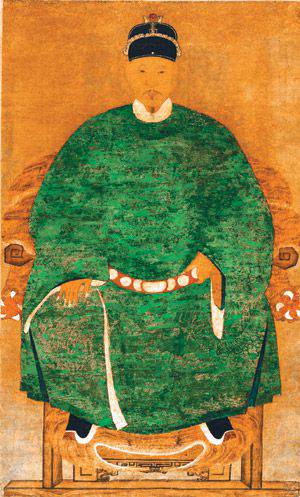 In April 1661, the 25-thousandth army commanded by Coxing landed on the coast of Formosa. The Chinese surrounded Fort Zealand. Coxing initially demanded that the governor, Frederick Coyet, surrender, threatening to execute the Dutch missionary Anthony Hambroek, who was captured with the family, otherwise. The governor refused to comply with the requirements of the Chinese commander and Koksing ordered the hostage to be killed. Hambroek's daughter became Coxing's concubine. A nine-month siege of the fort began, which ultimately ended with its surrender. The commander of the defense of Fort Frederick Coyet and other Dutch military personnel were released, and the fort became the headquarters of Coxing. So began story independent Formos kingdom, which in China and other East Asian countries is better known as the state of Dunnin, which means "peace in the east." It is sometimes called the state of the Zheng dynasty, since from 1662 to 1683. Coxing (Zheng Chenggun) consistently ruled here, then his son Zheng Jing and grandson Zheng Keshuang. In fact, the Dunnin State was an island of Minsk statehood on the island of Taiwan, since it inherited the classical Chinese political and administrative traditions, the Confucian Codex.
In April 1661, the 25-thousandth army commanded by Coxing landed on the coast of Formosa. The Chinese surrounded Fort Zealand. Coxing initially demanded that the governor, Frederick Coyet, surrender, threatening to execute the Dutch missionary Anthony Hambroek, who was captured with the family, otherwise. The governor refused to comply with the requirements of the Chinese commander and Koksing ordered the hostage to be killed. Hambroek's daughter became Coxing's concubine. A nine-month siege of the fort began, which ultimately ended with its surrender. The commander of the defense of Fort Frederick Coyet and other Dutch military personnel were released, and the fort became the headquarters of Coxing. So began story independent Formos kingdom, which in China and other East Asian countries is better known as the state of Dunnin, which means "peace in the east." It is sometimes called the state of the Zheng dynasty, since from 1662 to 1683. Coxing (Zheng Chenggun) consistently ruled here, then his son Zheng Jing and grandson Zheng Keshuang. In fact, the Dunnin State was an island of Minsk statehood on the island of Taiwan, since it inherited the classical Chinese political and administrative traditions, the Confucian Codex. It was during this period that a large number of Chinese escaped from the Manchu expansion arrived on the island. Among them, the majority were servicemen and officials of the Minsk dynasty, who formally remained loyal to the last emperor of Minsk. Thus, three centuries before the Komindan’s retreat to Taiwan, the scenario of creating a “Chinese state in exile” on the island was already tested by Coxing. This extraordinary man - a pirate, then - the general, and then the ruler of the state, began the arrangement of the Chinese kingdom on the island, but in 1662, he died of malaria, being by modern standards a young man of thirty-eight.
Authority in Taiwan was succeeded by his son Zheng Jing (1642-1681). It is noteworthy that initially Coxing did not want to transfer power to his eldest son, since he was convicted of an intimate relationship with his nurse. According to Confucian law, this meant incest and Zheng Jing was supposed to be put to death. However, the death of Coxings from malaria not only eased the fate of his son, but also made the latter the ruler of Taiwan for the next 19 years. Zheng Jing waged successful wars with Qing China in the territory of Fujian province, where he periodically sent his fleet from the coasts of Taiwan. However, in the end, the forces of Dunnin and the Qing empire were clearly incomparable, especially after the naval commanders of Fujian province joined the Manchus. After Zheng Jing's death, his son Zheng Keshuang (1670-1717) took power in the state of Dongning. The latter managed only two years to be in the role of ruler - after the troops of the Qing Empire still overcame the Dongning state and landed in Taiwan, Zheng Keshuang capitulated. The Qing empire saved his life and to the end of his days he lived peacefully in Beijing. For the next two hundred years, Taiwan became part of the Qing Empire.
It is noteworthy that the memory of Koksing, the founder of the Dunnin State, is currently respected by the authorities of the People's Republic of China and the authorities of the Republic of China. The former honor him as the leader of the national liberation movement of China, who fought against the Manchu invaders, and the latter see Koksing as the founder of Taiwanese statehood, who also, like the Kuomintang leaders, arrived on the island from mainland China and re-established the traditional Chinese state.
Under the rule of the Qing Empire, the island was located from 1683 to 1895. The settlement of the island by the Chinese continued during this period, but throughout the Qing dynasty, the political situation in Taiwan remained extremely tense. The island was inhabited by southern Chinese - people from Fujian and Guangdong provinces, for whom the Manchu Qing dynasty was most hated. Therefore, for two centuries, popular uprisings periodically flared up on the island and almost all of them officially proclaimed the restoration of power to the legitimate Ming dynasty. At the end of the 19th century, a new powerful military-political player appeared in the Asia-Pacific region - Japan. It should be noted here that Japan, at the beginning of the 17th century, attempted to gain a foothold in Taiwan, but then it did not have sufficient resources to assert its domination on the island, so it was forced to postpone this goal until better times, which followed almost three centuries later. In 1894-1895 The Sino-Japanese war lasted, following which the Qing Empire recognized Japan’s power over the island of Taiwan. So for the next half century, the island came under Japanese control, which was also not very soft on the part of the authorities and loyalty on the part of the local population, but that's another story.
As for the island’s colonial heritage, the remains of Fort Zeeland in Tainan, as well as the Spanish Fort Antonio in Tamsui, are still preserved. It should be noted that the Dutch made a significant contribution to the development of the Taiwanese economy, since it was during the period of the existence of the Dutch Formosa that the island became an important trading center in East and Southeast Asia. Finally, the most important consequence of the Dutch presence on the island was the mass settlement of Taiwan by the Chinese, both during the Dutch administration and in the subsequent epoch of the Dongnin state. It was the Dutch policy of agricultural development, accompanied by the importation of thousands of Chinese workers, and the emigration of thousands of refugees to the island - supporters of the Ming dynasty, initiated the transformation of the island into a purely Chinese territory, formed its modern ethnocultural image.
Information